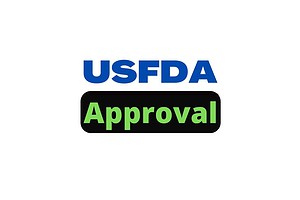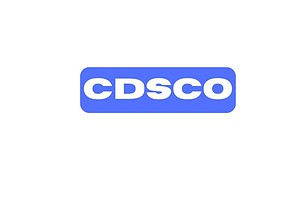- Key Notes on Revised Schedule M: API Part-3 - April 7, 2025
- Key Notes on Revised Schedule M: API Part-2 - March 28, 2025
- Key Notes on Revised Schedule M: API Part-1 - March 15, 2025
Last Updated on March 16, 2025 by The Health Master
QA Person
Quality assurance (QA) plays a critical role in ensuring that pharmaceutical products meet the required quality standards.
In the pharmaceutical industry, a QA person is responsible for ensuring that products are manufactured, tested, and released according to the relevant regulations and guidelines.
This article will cover the qualifications, duties, and responsibilities of a QA person in the pharmaceutical industry.
Qualifications of a QA Person
To become a QA person in the pharmaceutical industry, one should have a degree in a science-related field, such as chemistry, biology, or pharmacy, to better understand pharmaceutical products.
Some employers may also require additional qualifications or training in quality management systems or as per regulatory requirements.
In addition to formal education, a QA person must have attention to detail, excellent communication and interpersonal skills, and the ability to work well in a team.
They must be familiar with regulatory requirements and industry guidelines, as well as quality management systems and statistical analysis.
Duties and Responsibilities of a QA Person
QA person in a pharmaceutical industry should perform primarily the following duties and responsibilities:
- Review of Manufacturing Processes: The QA person ensures that manufacturing processes meet the required quality standards by reviewing the manufacturing procedures, batch records, and testing protocols.
- Product Release: A QA person ensures that products are released only after they have met the required specifications and are deemed safe and effective.
- Quality Control: A QA person collaborates with the Quality Control (QC) team to ensure that laboratory testing is conducted appropriately and meets the required specifications.
- Audit: The QA person conducts regular internal audits of the manufacturing facility to ensure that the facility meets the required quality standards. Also handles the external audit cand its compliance.
- Documentation: A QA person is responsible for ensuring that all necessary documentation is completed accurately, in a timely manner, and in compliance with regulatory requirements.
- Deviation Management: The QA person is responsible for reviewing and approving deviation reports and ensuring that corrective and preventive actions (CAPA) are implemented.
- Complaint Handling: The QA person is responsible for reviewing and investigating product complaints to ensure implementation of corrective and preventive actions (CAPA).
- Product recall: The QA person is responsible for reviewing and investigating product which are called back due to some defects in the products and ensure implementation of root cause analysis (RCA) and corrective and preventive actions (CAPA).
- Training: A QA person is responsible for training of manufacturing and laboratory personnel on quality-related procedures and regulations.
Apart from the above the QA person in a pharmaceutical industry should also perform the following duties and responsibilities:
- Quality management system: Handling of quality management system (Change Control system, Deviation, Incident & other related documents).
- Laboratory incidents: Handling of out of specification (OOS) and out of trend (OOT) laboratory incidents and their closing.
- Quality control: Preparation & review the method of analysis (MOA), standard testing procedure (STP) and other documents related to QC.
- Non-conformity: Handling of non-conformity as per defined procedure.
- SOPs: Preparation & implementation of SOPs related to the concerned department.
- BPR: Implementation & verification, in-process checks, online entries in BPR of product at manufacturing site.
- GMP: Monitoring and ensuring the good manufacturing practice (GMP) at manufacturing site.
- GLP: Monitoring and ensuring the good laboratory practice (GLP) by laboratory personal during the routine analysis and instrument operation ensure adherence to procedure.
- Quality Risk Assessment: Preparation & review of Quality Risk Assessment.
- Line clearance: To give line clearance before starting the new batch in production.
- Sampling: Sampling the intermediate, semi-finish & finish of product.
- Raw material: To verify dispensing of raw material.
- Temperature & humidity: Monitoring the record of Temperature & Relative Humidity in respective areas.
- Product specifications: Develops, implements, and manages processes to ensure that products meet required specifications for quality, function, and reliability prior to delivery.
- Standard for products: Identifies and sets appropriate quality standards and parameters for products.
- New technologies: Evaluate new technologies and methods to make recommendations regarding their use.
- Other documentation: To prepare the Validation Master Plan, Site Master File, Drug Master File, Annual Product Quality Review, Plant Layout and other documents related to QA.
- Customer: To execute and providing the Documents to Customers.
Conclusion
A QA person in the pharmaceutical industry plays a crucial role in ensuring that products meet the required quality standards.
The responsibilities of a QA person include reviewing manufacturing processes, product release, quality control, audits, documentation, deviation management, complaint handling, product recall, and training.
Key Notes on Revised Schedule M: Must read
Key Changes for Homoeopathic Medicines: GSR 669(E) dated 28-10-2024
Significance of Granules Manufacturing in the Pharmaceutical Industry
Gist of the draft notification: Compounding of Offences under the Drugs and Cosmetics Act
Laboratory Waste Management, Types and Its Disposal
How to Become a Skilled Manufacturing Chemist in the Pharma Industry
Sweet Science: Exploring Importance of Inverted Sugar in Pharma Industry
NABL certification for Laboratories: Let’s understand
Major FDA audit findings about Equipment and Instruments
Equipment and Instruments: Maintenance, difference and importance in the Pharma Industry
Quality Assurance in the Pharmaceutical Industry
NIPER: A Comprehensive Guide to NIPER Institutes in India
Latest on Indian Pharmacopoeia Commission (IPC)
Types of inspections done by USFDA: Read in detail
AHUs, Air Types, Air Changes and their Functions in Pharma Industry
Understanding Airlock Systems in Pharma Industry
Upcoming events: Pharma, Cosmetics, Homoeopathy & Medical Devices
Guidance documents for industry
Cosmetics Testing in India: A Comprehensive Guide
Airlocks in the Pharma Industry: An essential component
Line clearance and maintenance in manufacturing: A comprehensive guide
Difference between Validation and Calibration in the Pharma Industry
The Effectiveness of 70% Alcohol as a Disinfectant
Wet Granulation vs Dry Granulation: Understanding the Key Differences
Understanding GMP, cGMP, and WHO-GMP
USFDA issues Form 483 to Pharma Companies: Let’s know all about it
Calibration of Laboratory Instruments
Difference: Disintegration and Dissolution test in pharma industry
How to prepare SOPs in the Pharma Industry
Difference between branded and generic medicines
Understanding DQ, IQ, PQ, and OQ in the Pharma Industry
Duties and responsibilities of QA person in Pharma Industry
Types of Tablet Coating and its Functionality in pharma industry
Dissolution test: Importance in Pharma Industry
Lux level in Industry (Pharma, Cosmetics, Homeopathy & Medical Devices)
NSQ Drug: Route cause analysis and CAPA
Area required for manufacturing of Drugs, Cosmetics, Homoeopathic & Blood Centre
BA / BE Studies: Bioavailability & Bioequivalence
How to prepare SOPs in the Pharma Industry
Difference between branded and generic medicines
Understanding DQ, IQ, PQ, and OQ in the Pharma Industry
Types of Tablet Coating and its Functionality in pharma industry
Dissolution test: Importance in Pharma Industry
Lux level in Industry (Pharma, Cosmetics, Homeopathy & Medical Devices)
NSQ Drug: Route cause analysis and CAPA
Area required for manufacturing of Drugs, Cosmetics, Homoeopathic & Blood Centre
BA / BE Studies: Bioavailability & Bioequivalence
Licensing procedure for manufacturing of Drugs
Procedure to obtain license for manufacturing of Cosmetics
Procedure to obtain license for manufacturing of Homoeopathic Medicines
Procedure to obtain license for manufacturing of Medical Devices
Procedure to obtain License to Manufacture drugs for testing and analysis purposes
Procedure to obtain license for Blood Centre (Blood Bank)
Procedure to obtain license for Commercial Testing Laboratories
For informative videos by The Health Master, click on the below YouTube icon:
For informative videos on Medical Store / Pharmacy, click on the below YouTube icon:
For informative videos on the news regarding Pharma / Medical Devices / Cosmetics / Homoeopathy etc., click on the below YouTube icon:
For informative videos on consumer awareness, click on the below YouTube icon:













